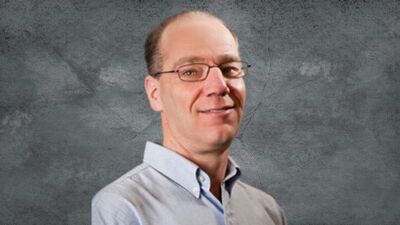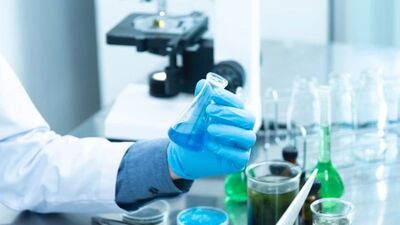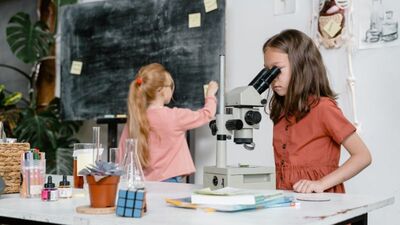DOE Newswire Report News
Putting hydrogen on solid ground: simulations with a machine learning model predict a new phase of solid hydrogen
By DOE Newswire Report | May 17, 2023
Hydrogen, the most abundant element in the universe, is found everywhere from the dust filling most of outer space to the cores of stars to many substances here on Earth.
Scientists Study Ice Formation in the Atmosphere
By DOE Newswire Report | May 17, 2023
Proposing New Methods to Better Understand This Atmospheric Phenomenon
University awarded DOE grant to research high energy physics
By DOE Newswire Report | May 17, 2023
The U.S. Department of Energy (DOE) has finalized its approval of a $125,000 grant to Cal State San Bernardino’s Department of Physics and Astronomy to support CSUSB students’ research on high energy physics at the Pacific Northwest National Lab (PNNL).
Morgan to Address Urban Climate Change Impacts and Adaptations with $5M Department of Energy Grant Award
By DOE Newswire Report | May 17, 2023
Morgan State University (MSU) has been awarded a $5-million grant from the U.S. Department of Energy (DOE) to establish an integrated field laboratory (IFL) to study climate impacts and adaptations in urban environments.
Ceremony unveils new buildings to advance science at Fermilab
By DOE Newswire Report | May 17, 2023
On April 13, Fermi National Accelerator Laboratory celebrated three important construction milestones designed to increase the lab’s research efficiencies and capabilities and continue progress on the international Deep Underground Neutrino Experiment.
UCR team creates “quantum composites” for various electrical and optical innovations
By DOE Newswire Report | May 17, 2023
Ateam of UCR electrical engineers and material scientists demonstrated a research breakthrough that may result in wide-ranging advancements in electrical, optical, and computer technologies.
Grove School engineer Samah Saeed is beneficiary of $4.6m DoE grant to advance quantum computing
By DOE Newswire Report | May 17, 2023
City College of New York Computer engineer and scientist Samah M. Saeed is the co-recipient of a $4.6 million U.S. Department of Energy [DoE] grant to advance quantum computing.
Carbon ‘Bank’ At Risk Of Failure
By DOE Newswire Report | May 17, 2023
Tropical rainforests store 25%-40% of global soil carbon, though they occupy only 7% of Earth’s land area.
Uc Irvine Joins Effort To Train Next-gen Physics Workforce
By DOE Newswire Report | May 17, 2023
UCI is now part of consortium of universities and national labs that are aiming to foster the growth of the next generation of physicists.
How a mutation in the SKD3 enzyme can cause MGCA7 disease
By DOE Newswire Report | May 17, 2023
Researchers at Baylor College of Medicine and collaborating institutions report in the journal Nature Communications how a mutation in the enzyme SKD3 can cause a form of a genetic disease known as 3-methylglutaconic aciduria (MGCA7).
Physicists find unusual waves in nickel-based magnet
By DOE Newswire Report | May 17, 2023
Neutron scattering reveals coherent waves of ‘spin excitons’ in nickelate crystal
Exploring the Force that Binds the Universe
By DOE Newswire Report | May 17, 2023
Physicists Rosi Reed and Anders Knospe lead pioneering experiments at Brookhaven National Laboratory to better understand the strong nuclear force responsible for all matter.
Diamond cut precision: Beck to develop diamond sensors for neutron experiment and quantum information science
By DOE Newswire Report | May 17, 2023
The nuclear physics group at the University of Illinois Urbana-Champaign is looking for evidence of new physics in neutrons, electrically neutral particles that hold atomic nuclei together with an interaction called the strong force.
FSU announces bold investments in quantum science and engineering
By DOE Newswire Report | May 17, 2023
At the atomic and subatomic scales of matter, classical laws of nature lose control and quantum mechanics take over. Discoveries of new quantum phenomena and materials, such as quantum entanglement and topological systems, promise to deliver groundbreaking technologies.
A Holographic View into Quantum Anomalies
By DOE Newswire Report | May 17, 2023
Theorists calculated how the key ingredients of a phenomenon called the chiral magnetic effect (CME) should evolve over time in an expanding quark-gluon plasma (QGP).
Small Fusion Experiment Hits Temperatures Hotter than the Sun’s Core
By DOE Newswire Report | May 17, 2023
To produce commercial energy, future fusion power plants will need to achieve temperatures of 100 million degrees C.
Detecting Neutrinos from Nuclear Reactors with Water
By DOE Newswire Report | May 17, 2023
Neutrinos are subatomic particles that interact with matter extremely weakly.
Viruses Could Reshuffle the Carbon Cycle in a Warming World
By DOE Newswire Report | May 17, 2023
Microbes play important roles in ecosystems, and these roles are changing with global warming.
Surprising Preference in Particle Spin Alignment
By DOE Newswire Report | May 17, 2023
Certain particles that emerge from a hot soup of matter generated in collisions of atomic nuclei appear to have a preferential “global spin alignment.”
Conformer-Dependent Reactivity of Carbonyl Oxides Leads to Dramatically Different Atmospheric Fates
By DOE Newswire Report | May 17, 2023
Secondary organic aerosol (SOA) is a type of air pollution that affects health, air quality, and the global climate. SOA forms when ammonia and related chemicals called amines react with oxygenated species.

















